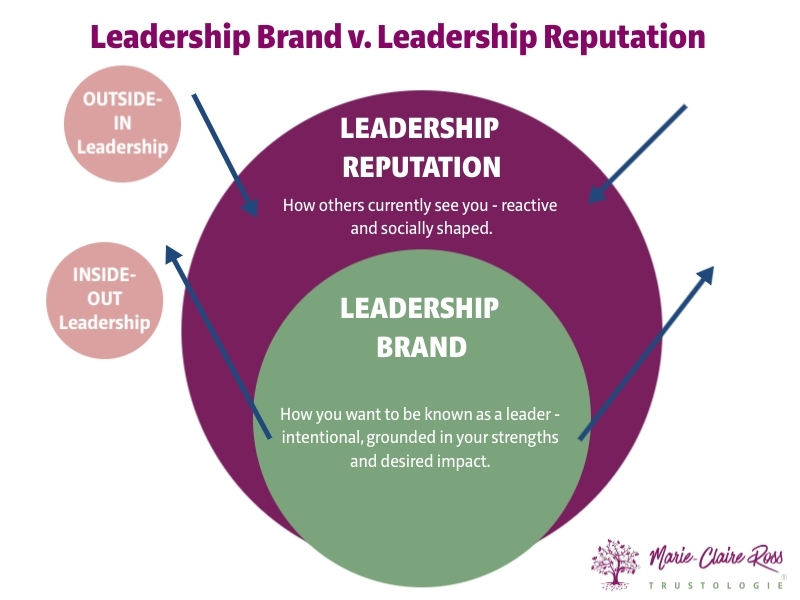6 Essential Executive Skills That Will Make You Unstoppable in 2026
The workplace is evolving at a pace few previous generations have seen and 2026 will mark a turning point. The Future of Work is blended, not hybrid....
Develop leaders, strengthen executive teams and gain deep insights with assessments designed to accelerate trust and performance.

Transform how your leaders think and perform with keynotes that spark connection, trust and high-performance cultures.

Explore practical tools, thought-leadership and resources to help you build trusted, high-performing teams.

Trustologie® is a leadership development consultancy founded by Marie-Claire Ross, specialising in helping executives and managers build high-trust, high-performing teams.

5 min read
Marie-Claire Ross : Updated on October 6, 2020

Corporate culture might be an over-used terms these days, but what it really boils down to is what behaviours staff undertake when no-one is watching.
After all, leaders set the tone of the culture. Whatever behaviours are tolerated or exhibited by business leaders, end up creating the overall culture of the company. Over time, without judicious weeding of poor behaviours, the culture can quickly become toxic and in need of strong weed-killer, that doesn’t kill everything else around it.
Red flags that signal urgent improvement include when an organisation has a staff member absconding with company money, employees are gossiping more frequently, turnover increases and great staff start leaving, workplace injuries increase, or worse a near miss or fatal event occurs, a new product launch is received poorly by the market, goals are rarely met or no new products or services have been created in years.
The longer the company has been around, the more likely poor behaviours are slowly strangling the life out of productive behaviours.
Take GM for instance. When an email was circulated by a GM lawyer that a victim died in a GM Cobalt vehicle because of a faulty ignition switch, nothing happened. Despite, internal engineers trying to solve the problem for ten years. No report was given to senior executives, no recall was launched and not even the general counsel was alerted. Instead, a report was commissioned that took six months to be written. And when that, unsurprisingly, pointed the issue to the ignition switch, the chief engineer responsible for the investigation deliberated over the result. Finally, a public recall was undertaken a full nine months after the initial discovery that GM was responsible. The result was 13 people lost their lives.
So why did employees ignore the crucial information potentially saving customers from dying from faulty airbags that don’t deploy? It was due to culture. A culture where people avoid bringing bad news to higher-ups. At GM, no one is held accountable for a decision. For decades, GM employees have never been held responsible for the success or failure of a project. People don’t even get fired for poor performance. What started as a genuine attempt to protect employees from losing their jobs has turned into a highly dysfunctional and rigid culture where no one debates, decisions are made in private and vital information is hidden. Now, Mary Barra the new CEO, is charged with the enormously difficult task of transforming the culture – a culture where failing to change the culture has famously become part of the culture.
Without vigilant pruning, poor behaviours can quickly run rampant, making it hard to create change, unless a full blown crisis emerges. Even behaviours that were beneficial in earlier days, can morph into restrictive actions that can work against a company.
Consider MYOB, an accounting software company. The CEO, Tim Reed, recently told BOSS magazine, that he recently overhauled the company culture because:
“Essentially, people worked in a culture where they believed someone else was responsible. They believed 2 or 3 execs at the top were the only decision makers. The deep-seated belief was an overhang of the entrepreneurial days, when 3 people did make every decision. We now have a culture of test and learn.”
And that brings me to the next point. What sort of culture does you company need to nurture to move forward in the right direction? Every company is different and some might need more of a firm nudge. But a strong, visionary CEO needs to take a stand and assess the current culture and see how it can be fine-tuned to move in the right direction.
Here are a selection of cultures that you might want to consider cultivating, in order to generate the right behaviours to reach your goals:
There are lots of different types of cultures that can be fostered by an organisation. It all depends on your company DNA of who you are, what you’re trying to achieve and what behaviours needs to be altered.
Essentially, the job of a CEO is to continually find ways of getting other people to do their best work in service of a shared goal. And the only way to do that is to provide an environment that gets your company and all its employees to collectively meet that goal as quickly and as efficiently as possible.

The workplace is evolving at a pace few previous generations have seen and 2026 will mark a turning point. The Future of Work is blended, not hybrid....

Many leaders jump into a leadership position excited by the opportunity to help others and perform at a higher level.

What makes a good team leader isn’t just about having authority or getting tasks done - it’s about the ability to create an environment where people...

Sitting in front of me is Emma, a quietly spoken woman with dark hair that softly frames her face. She is nervous and avoiding eye contact with me. ...

Over the years, I have worked with many low trust teams to improve their performance. Repeatedly, I still see well-meaning leaders inadvertently...

Back in the 1970s - 1980s, Jimmy Savile was one of the most famous television presenters on the BBC. An effervescent, eccentric man he hosted "Top...